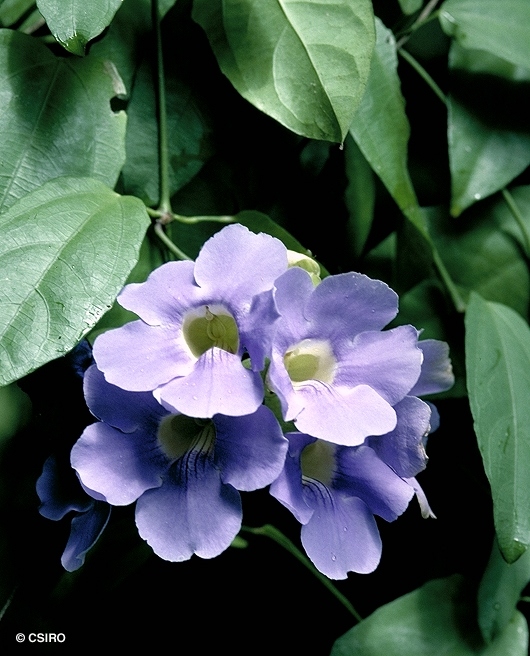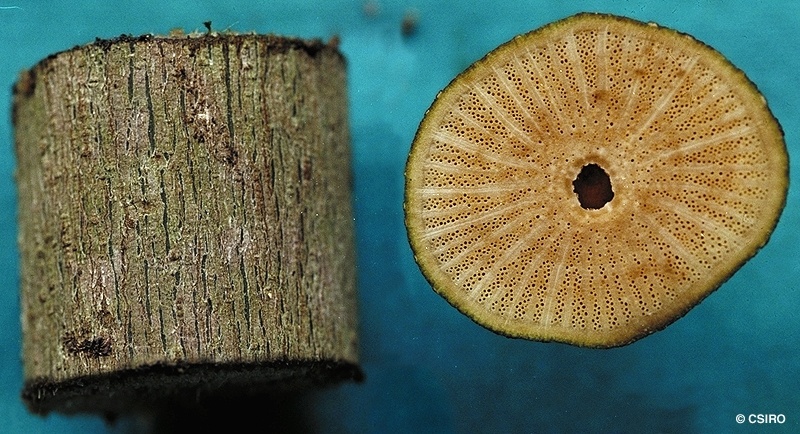Australian Tropical Rainforest Plants - Online edition
Thunbergia grandiflora Roxb.




Roxburgh, W. (1820) Edwards' Botanical Register 6 : Pl. 495, Type: flowered in [Mr. Herberts] hothouse at Spofforth the summer before last .. Found among bushes, etc., uncultivated spots near Calcutta.
Vine, Blue Trumpet; Vine, Clock; Vine, Bengal Clock; Vine, Sky; Blue Sky flower; Blue Thunbergia; Bengal Clock Vine; Sky Flower; Blue Trumpet Vine; Clock Vine; Sky Vine
Can grow into a large vine, stem diameters up to 4 cm recorded. Stems swollen at the nodes or branch sites.
Leaf blades variable in size and shape, about 9-15 x 3-12.5 cm, petioles about 2-5 cm long. Larger twigs usually hollow.
Flowers about 7-9 cm diam. Calyx cup-shaped, hairy, about 40-50 x 25 mm, completely obscured by the large leafy bracts. Corolla tube about 45 mm long, constricted about the middle, lobes about 25 mm long. Corolla tube cream to yellowish on the inner surface. Stamens four, about 20-25 mm long, anthers about 6-8 mm long. Ovary about 6 mm long, surrounded by a fleshy disk. Style and stigma about 30-35 mm long. Stigma resembles a laterally compressed funnel.
Features not available.
Features not available.
An introduced species originally from India now naturalised in NEQ, CEQ and southwards to south-eastern Queensland. Cultivated in NT and CYP but not known to be naturalised. There is some debate about its ability to set seed but it does regenerate by vegetative means. Altitudinal range from near sea level to 750 m. Usually found near settlements. Grows in rain forest or rain forest margins and will grow over and smother large trees.
Cultivated as an ornamental in many areas with several varieties but has become a serious weed of rain forest margins and stream side vegetation in the lowlands of NEQ.





